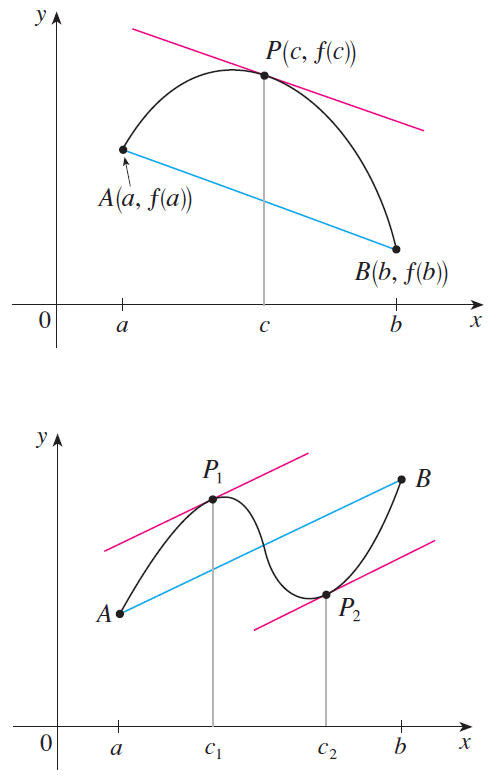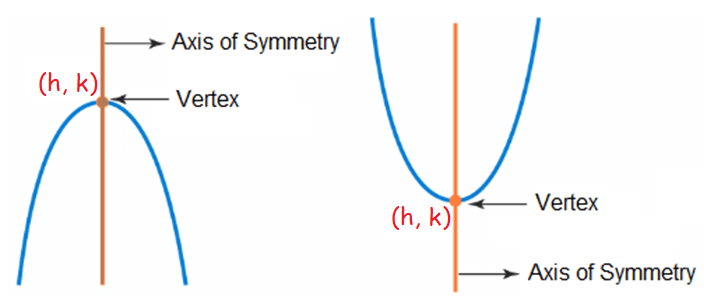DERIVATIVES OF INVERSE FUNCTIONS WORKSHEET
Problem 1 :
Let f(x) = x3 - 5x2 - 8 and g(x) be the inverse of f(x). Find f(1) and g'(-12).
Problem 2 :
Let f(x) = x3 + 7x + 2. If g(x) = f-1(x) and f(1) = 10, what is the value of g'(10).
Problem 3 :
Let f(x) = x5 + 3x3 + 7x + 2. If g(x) = f-1(x) and f(1) = 13, what is the value of g'(13).
Problem 4 :
Let f(x) = 7x3 + (lnx)3. If g(x) = f-1(x) and f(1) = 7, what is the value of g'(7).
Problem 5 :
Let f(x) = x7 + 2x + 9. The point (1, 12) is on the graph of f(x). If g(x) = f-1(x), find g'(12).
Problem 6 :
Find the equation of the tangent line to the inverse of f(x) at the point (-4, 0).
Problem 7 :
Find the equation of the tangent line to the inverse of f(x) at the point (0, 0).
Problem 8 :
Find the equation of the tangent line to the inverse of f(x) at the point (1, 0).
Problem 9 :
Given that g(x) = f-1(x), f(1) = 3 and f'(1) = -5. If the functions f and g are differentiable, find g'(3).
Problem 10 :
Given that g(x) = f-1(x), f(2) = 4 and f'(2) = 7. If the functions f and g are differentiable, find g'(4).

Answers
1. Answer :
f(x) = x3 - 5x2 - 8
Substitute x = 1.
f(1) = 13 - 5(1)2 - 8
f(1) = 1 - 5 - 8
f(1) = -12
Since g(x) is the inverse of f(x),
g(x) = f-1(x)
Formula to find the derivative of g(x).
Substitute x = -12.
We already know that
f(1) = -12
Since g(x) is the inverse of f(x),
g(-12) = 1
f(x) = x3 - 5x2 - 8
f'(x) = 3x2 - 5(2x) + 0
f'(x) = 3x2 - 10x
Substitute x = 1.
f'(1) = 3(1)2 - 10(1)
f'(1) = 3 - 10
f'(1) = -7
Therefore,
g'(-12) = -¹⁄₇
2. Answer :
Since g(x) is the inverse of f(x),
g(x) = f-1(x)
Formula to find the derivative of g(x).
Substitute x = 10.
Given : f(1) = 10.
Since g(x) is the inverse of f(x),
g(10) = 1
f(x) = x3 + 7x + 2
f'(x) = 3x2 + 7
Substitute x = 1.
f'(1) = 3(1)2 + 7
f'(1) = 3 + 7
f'(1) = 10
Therefore,
g'(10) = ¹⁄10
3. Answer :
Since g(x) is the inverse of f(x),
g(x) = f-1(x)
Formula to find the derivative of g(x).
Substitute x = 13.
Given : f(1) = 13.
Since g(x) is the inverse of f(x),
g(13) = 1
f(x) = x5 + 3x3 + 7x + 2
f'(x) = 5x4 + 9x2 + 7
Substitute x = 1.
f'(1) = 5(1)4 + 9(1)2 + 7
f'(1) = 5 + 9 + 7
f'(1) = 21
Therefore,
g'(13) = ¹⁄21
4. Answer :
Since g(x) is the inverse of f(x),
g(x) = f-1(x)
Formula to find the derivative of g(x).
Substitute x = 7.
Given : f(1) = 7.
Since g(x) is the inverse of f(x),
g(7) = 1
f(x) = 7x3 + (lnx)3
f'(x) = 21x2 + 3(lnx)2(¹⁄ₓ)
Substitute x = 1.
f'(1) = 21(1)2 + 3(ln1)2(¹⁄1)
f'(1) = 21 + 3(0)2(1)
f'(1) = 21
Therefore,
g'(7) = ¹⁄21
5. Answer :
Since g(x) is the inverse of f(x),
g(x) = f-1(x)
Formula to find the derivative of g(x).
Substitute x = 12.
Since the point (1, 12) is on the graph of f(x),
f(1) = 12
Since g(x) is the inverse of f(x),
g(12) = 1
f(x) = x7 + 2x + 9
f'(x) = 7x6 + 2
Substitute x = 1.
f'(x) = 7(1)6 + 2
f'(1) = 7 + 2
f'(1) = 9
Therefore,
g'(12) = ¹⁄9
6. Answer :
f(x) = x5 + 2x3 + x - 4
Let g(x) be the inverse of f(x).
g(x) = f-1(x)
To find the equation of the tangent line to g(x), we have to find the slope of the tangent line at (-4, 0), that is g'(-4).
Formula to find the derivative of g(x).
Since we need the equation of the tangent line at (-4, 0), substitute x = -4.
We have to find the equation of the tangent line to the inverse of f(x) at (-4, 0).
Since g(x) is the inverse of f(x),
g(-4) = 0
f(x) = x5 + 2x3 + x - 4
f'(x) = 5x4 + 8x2 + 1
Substitute x = 0.
f'(0) = 5(0)4 + 8(0)2 + 1
f'(0) = 1
Therefore,
g'(-4) = ¹⁄₁
g'(-4) = 1
Slope of the tangent line to g(x) at (-4, 0) :
m = 1
Equation of the tangent line to g(x) :
y - y1 = m(x - x1)
Substitute (x1, y1) = (-4, 0) and m = 1.
y - 0 = 1[x - (-4)]
y = x + 4
7. Answer :
f(x) = 7x + sin(2x)
Let g(x) be the inverse of f(x).
g(x) = f-1(x)
To find the equation of the tangent line to g(x), we have to find the slope of the tangent line at (0, 0), that is g'(0).
Formula to find the derivative of g(x).
Since we need the equation of the tangent line at (0, 0), substitute x = 0.
We have to find the equation of the tangent line to the inverse of f(x) at (0, 0).
Since g(x) is the inverse of f(x),
g(0) = 0
f(x) = 7x + sin(2x)
f'(x) = 7(1) + [cos(2x)](2)
f'(x) = 7 + 2cos(2x)
Substitute x = 0.
f'(0) = 7 + 2cos[2(0)]
f'(0) = 7 + 2cos(0)
f'(0) = 7 + 2(1)
f'(0) = 9
Therefore,
g'(0) = ⅑
Slope of the tangent line to g(x) at (0, 0) :
m = ⅑
Equation of the tangent line to g(x) :
y - y1 = m(x - x1)
Substitute (x1, y1) = (-4, 0) and m = ⅑.
8. Answer :
f(x) = x3 + 8x + cos(3x)
Let g(x) be the inverse of f(x).
g(x) = f-1(x)
To find the equation of the tangent line to g(x), we have to find the slope of the tangent line at (1, 0), that is g'(1).
Formula to find the derivative of g(x).
Since we need the equation of the tangent line at (1, 0), substitute x = 1.
We have to find the equation of the tangent line to the inverse of f(x) at (1, 0).
Since g(x) is the inverse of f(x),
g(1) = 0
f(x) = x3 + 8x + cos(3x)
f'(x) = 3x2 + 8(1) + [-sin(3x)](3)
f'(x) = 3x2 + 8(1) - 3sin(3x)
f'(x) = 3x2 + 8 - 3sin(3x)
Substitute x = 0.
f'(x) = 3(0)2 + 8 - 3sin(0)
f'(0) = 8 - 3(0)
f'(0) = 8
Therefore,
g'(1) = ⅛
Slope of the tangent line to g(x) at (1, 0) :
m = ⅛
Equation of the tangent line to g(x) :
y - y1 = m(x - x1)
Substitute (x1, y1) = (1, 0) and m = ⅛.
9. Answer :
Since g(x) = f-1(x), g(x) is the inverse of f(x).
Formula to find the derivative of g(x).
Substitute x = 3
Given : f(1) = 3.
Since g(x) is the inverse of f(x),
g(3) = 1
Given : f'(1) = -5.
Therefore,
g'(1) = -⅕
10. Answer :
Since g(x) = f-1(x), g(x) is the inverse of f(x).
Formula to find the derivative of g(x).
Substitute x = 4
Given : f(2) = 4.
Since g(x) is the inverse of f(x),
g(4) = 2
Given : f'(2) = 7.
Therefore,
g'(4) = ⅐
Kindly mail your feedback to v4formath@gmail.com
We always appreciate your feedback.
©All rights reserved. onlinemath4all.com
Recent Articles
-
The Mean Value Theorem Worksheet
May 14, 24 08:53 AM
The Mean Value Theorem Worksheet -
Mean Value Theorem
May 14, 24 02:48 AM
Mean Value Theorem -
How to Find the Vertex of a Parabola
May 12, 24 10:03 PM
How to Find the Vertex of a Parabola - Concept - Examples

